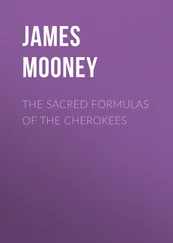The agent’s report to the Secretary of War, two days later, says of the affair:
The murder of Boudinot was treacherous and cruel. He was assisting some workmen in building a new house. Three men called upon him and asked for medicine. He went off with them in the direction of Wooster’s, the missionary, who keeps medicine, about three hundred yards from Boudinot’s. When they got about half way two of the men seized Boudinot and the other stabbed him, after which the three cut him to pieces with their knives and tomahawks. This murder taking place within two miles of the residence of John Ross, his friends were apprehensive it might be charged to his connivance; and at this moment I am writing there are six hundred armed Cherokee around the dwelling of Ross, assembled for his protection. The murderers of the two Ridges and Boudinot are certainly of the late Cherokee emigrants, and, of course, adherents of Ross, but I can not yet believe that Ross has encouraged the outrage. He is a man of too much good sense to embroil his nation at this critical time; and besides, his character, since I have known him, which is now twenty-five years, has been pacific.... Boudinot’s wife is a white woman, a native of New Jersey, as I understand. He has six children. The wife of John Ridge, jr., is a white woman, but from whence, or what family left, I am not informed. Boudinot was in moderate circumstances. The Ridges, both father and son, were rich....332
While all the evidence shows that Ross was in no way a party to the affair, there can be no question that the men were killed in accordance with the law of the Nation—three times formulated, and still in existence—which made it treason, punishable with death, to cede away lands except by act of the general council of the Nation. It was for violating a similar law among the Creeks that the chief, McIntosh, lost his life in 1825, and a party led by Major Ridge himself had killed Doublehead years before on suspicion of accepting a bribe for his part in a treaty.
On hearing of the death of the Ridges and Boudinot several other signers of the repudiated treaty, among whom were John Bell, Archilla Smith, and James Starr, fled for safety to the protection of the garrison at Fort Gibson. Boudinot’s brother, Stand Watie, vowed vengeance against Ross, who was urged to flee, but refused, declaring his entire innocence. His friends rallied to his support, stationing a guard around his house until the first excitement had subsided. About three weeks afterward the national council passed decrees declaring that the men killed and their principal confederates had rendered themselves outlaws by their own conduct, extending amnesty on certain stringent conditions to their confederates, and declaring the slayers guiltless of murder and fully restored to the confidence and favor of the community. This was followed in August by another council decree declaring the New Echota treaty void and reasserting the title of the Cherokee to their old country, and three weeks later another decree summoned the signers of the treaty to appear and answer for their conduct under penalty of outlawry. At this point the United States interfered by threatening to arrest Ross as accessory to the killing of the Ridges.333 In the meantime the national party and the Old Settlers had been coming together, and a few of the latter who had sided with the Ridge faction and endeavored to perpetuate a division in the Nation were denounced in a council of the Old Settlers, which declared that “in identifying themselves with those individuals known as the Ridge party, who by their conduct had rendered themselves odious to the Cherokee people, they have acted in opposition to the known sentiments and feelings of that portion of this Nation known as Old Settlers, frequently and variously and publicly expressed.” The offending chiefs were at the same time deposed from all authority. Among the names of over two hundred signers attached that of “George Guess” (Sequoya) comes second as vice-president.334
On July 12, 1839, a general convention of the eastern and western Cherokee, held at the Illinois camp ground, Indian territory, passed an act of union, by which the two were declared “one body politic, under the style and title of the Cherokee Nation.” On behalf of the eastern Cherokee the instrument bears the signature of John Ross, principal chief, George Lowrey, president of the council, and Going-snake (I′nadû-na′ĭ), speaker of the council, with thirteen others. For the western Cherokee it was signed by John Looney, acting principal chief, George Guess (Sequoya), president of the council, and fifteen others. On September 6, 1839, a convention composed chiefly of eastern Cherokee assembled at Tahlequah, Indian territory—then first officially adopted as the national capital—adopted a new constitution, which was accepted by a convention of the Old Settlers at Fort Gibson, Indian Territory, on June 26, 1840, an act which completed the reunion of the Nation.335
The Arkansas Band—1817–1838
Table of Contents
Having followed the fortunes of the main body of the Nation to their final destination in the West, we now turn to review briefly the history of the earlier emigrants, the Arkansas or Old Settler Cherokee.
The events leading to the first westward migration and the subsequent negotiations which resulted in the assignment of a territory in Arkansas to the western Cherokee, by the treaty of 1817, have been already noted. The great majority of those thus voluntarily removing belonged to the conservative hunter element, who desired to reestablish in the western wilderness the old Indian life from which, through the influence of schools and intelligent leadership, the body of the Cherokee was rapidly drifting away. As the lands upon which the emigrants had settled belonged to the Osage, whose claim had not yet been extinguished by the United States, the latter objected to their presence, and the Cherokee were compelled to fight to maintain their own position, so that for the first twenty years or more the history of the western band is a mere petty chronicle of Osage raids and Cherokee retaliations, emphasized from time to time by a massacre on a larger scale. By the treaty of 1817 the western Cherokee acquired title to a definite territory and official standing under Government protection and supervision, the lands assigned them having been acquired by treaty from the Osage. The great body of the Cherokee in the East were strongly opposed to any recognition of the western band, seeing in such action only the beginning of an effort looking toward the ultimate removal of the whole tribe. The Government lent support to the scheme, however, and a steady emigration set in until, in 1819, the emigrants were said to number several thousands. Unsuccessful endeavors were made to increase the number by inducing the Shawano and Delawares of Missouri and the Oneida of New York to join them.336
In 1818 Tollunteeskee (Ata′lûñti′skĭ), principal chief of the Arkansas Cherokee, while on a visit to old friends in the East, had become acquainted with one of the officers of the American Board of Commissioners for Foreign Missions, and had asked for the establishment of a mission among his people in the West. In response to the invitation the Reverend Cephas Washburn and his assistant, Reverend Alfred Finney, with their families, set out the next year from the old Nation, and after a long and exhausting journey reached the Arkansas country, where, in the spring of 1820, they established Dwight mission, adjoining the agency at the mouth of Illinois creek, on the northern bank of the Arkansas, in what is now Pope county, Arkansas. The name was bestowed in remembrance of Timothy Dwight, a Yale president and pioneer organizer of the American Board. Tollunteeskee having died in the meantime was succeeded as principal chief by his brother, John Jolly,337 the friend and adopted father of Samuel Houston. Jolly had removed from his old home at the mouth of Hiwassee, in Tennessee, in 1818.338
Читать дальше












